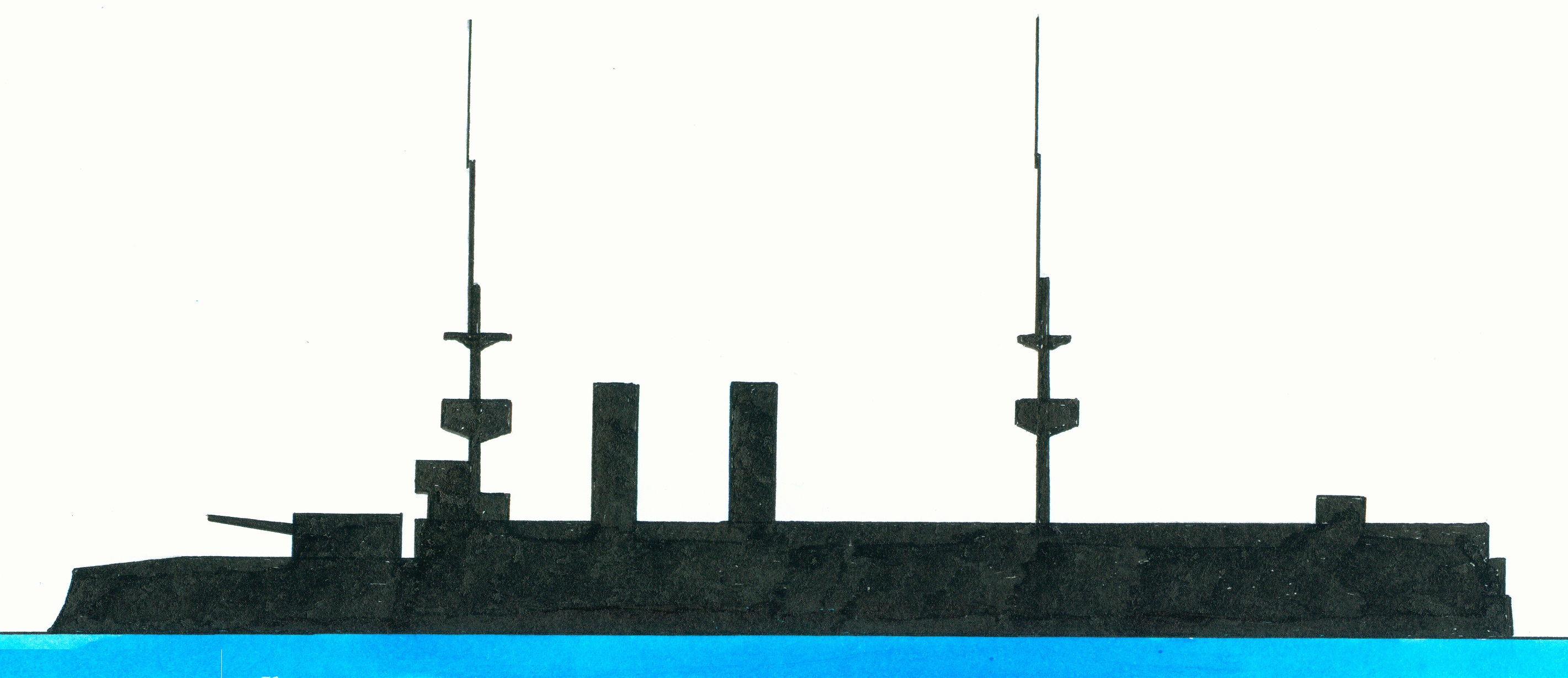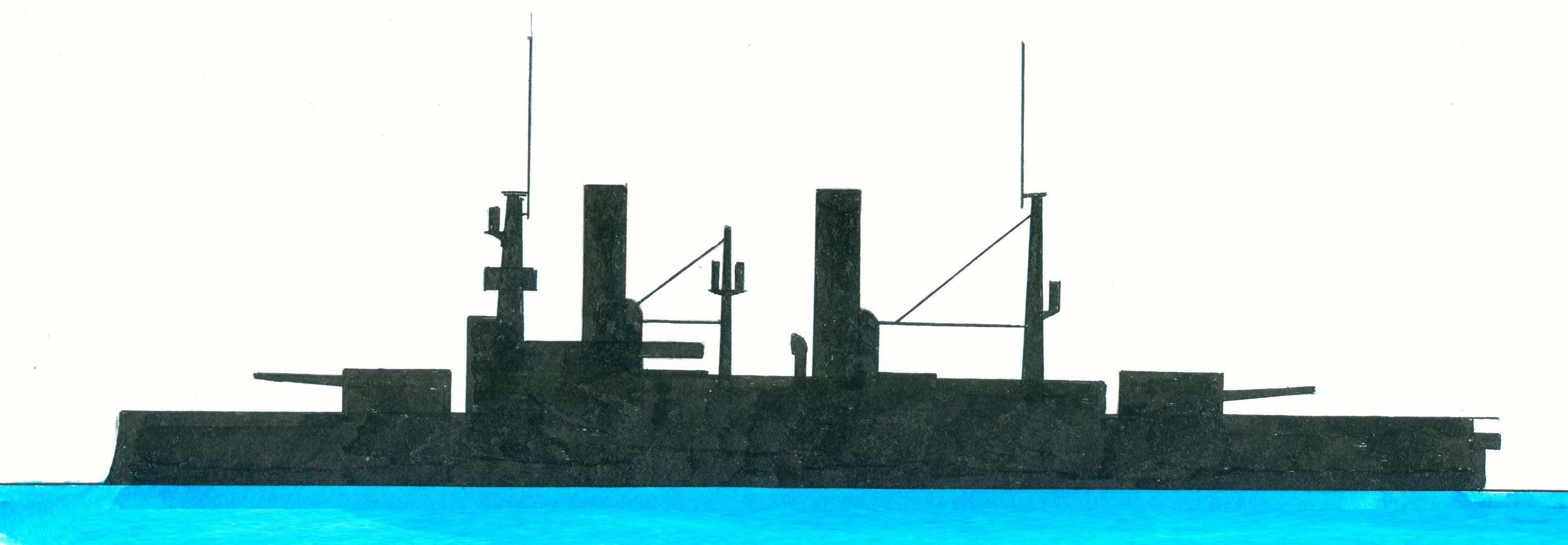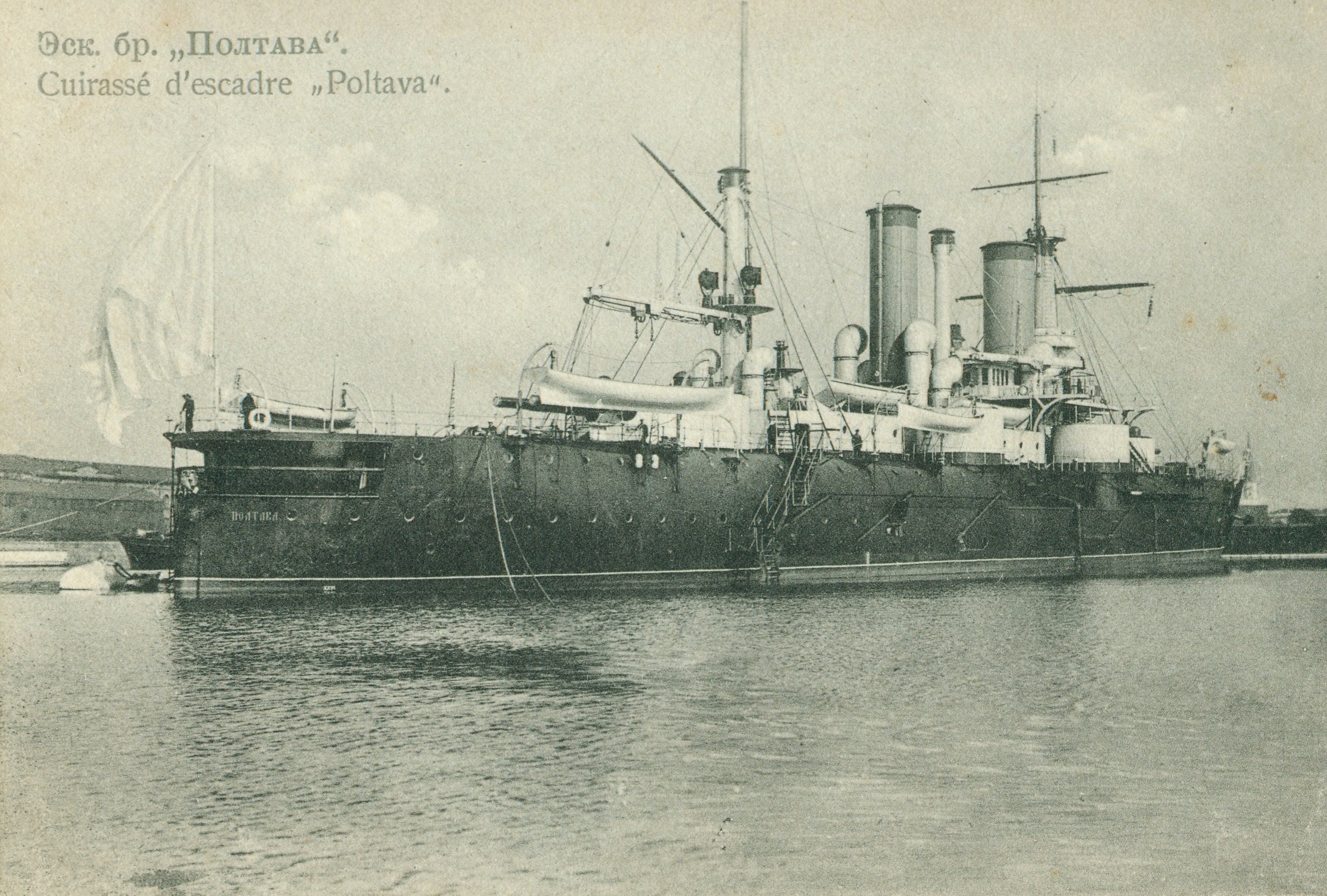Russian Imperator Nikolai I as the Japanese Iki
Russian Poltava as Japanese Tango
As the Russian Poltava
Laid down at the New Admiralty Shipyard, St. Petersburg, Russia on 19 May 1892, launched on 6 November 1894, commissioned in 1899, sunk after hits by Japanese gunfire on 5 December 1904, captured by the Japanese forces at Port Arthur in January 1905, refloated in July 1905, renamed Tango and commissioned in the Japanese navy on 22 August 1905, reclassified as 1st class coast defence ship in 1916, sold back to Russia on ¾ April 1916, renamed Chesma, in hands of the Bolsheviks in October 1917, captured by British forces in March 1919, recaptured by Soviet forces and stricken on 3 July 1924.
Of the Petropavlovsk-class consisting of the Poltava, Sevastopol and Petropavlovsk, preceded by the Imperator Aleksandr II-class and succeeded by the Tri Sviatitelia. Displacement 11.140 9design)-11.685 tons and as dimensions 114,6 (over all) x 21,3 c 8,6 metres or 376 x 70 x 28 feet. The machinery consisted of 14 cylindrical fire-tube boilers and 2 vertical triple expansion engines delivering via 2 shafts 10.600 ihp allowing a speed of 16 knots and with a speed of 10 knots a range of 3.750 nautical miles. Her crew numbered 631-652 men in Russian service and 668 in Japanese service. The Krupp armour consisted of a 25,4cm/10”-36,8cm/14.5” thick waterline belt, a 6,1cm/2”-7,6cm/3” thick deck with the main turrets, secondary turrets and conning tower protected by respectively 24,5cm/10”, 12,7cm/12” and 22,9cm/9”. Originally consisted the armament of 2x2-30,5cm/12” guns, 2x2&4x1-15,2cm/6’ guns, 12x1-4,7cm/1.9” guns, 28x1-3,7cm/1.5” guns, 4-38,1cm/15” surfaced torpedo tubes and 2-45,7c,/18” submerged torpedo tubes. In Japanese service was the armament changed into 2-12” guns, 10-6” guns, 10x1-12pd quick firing guns, 4-18” surfaced torpedo tubes and 50 mines.



